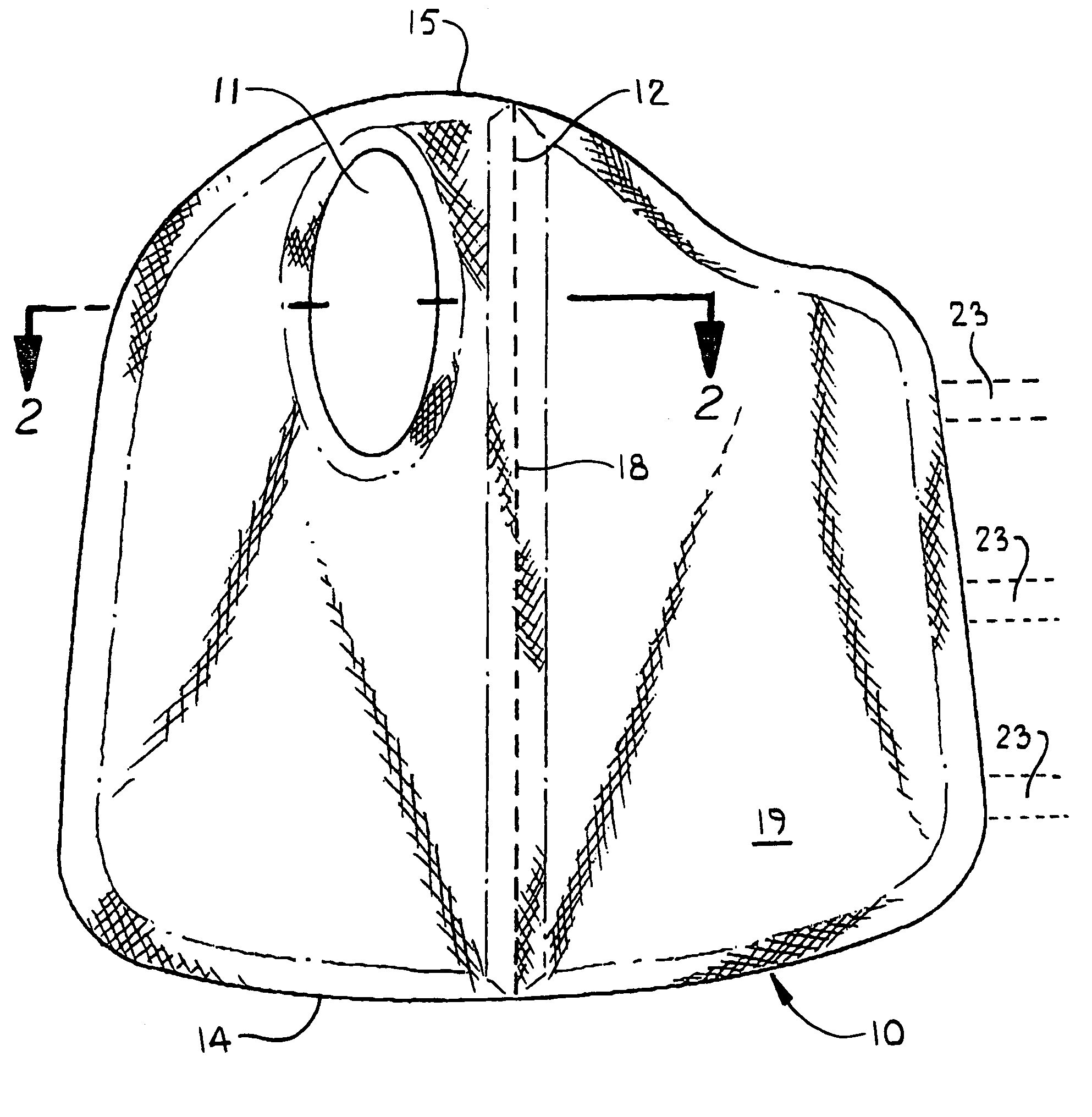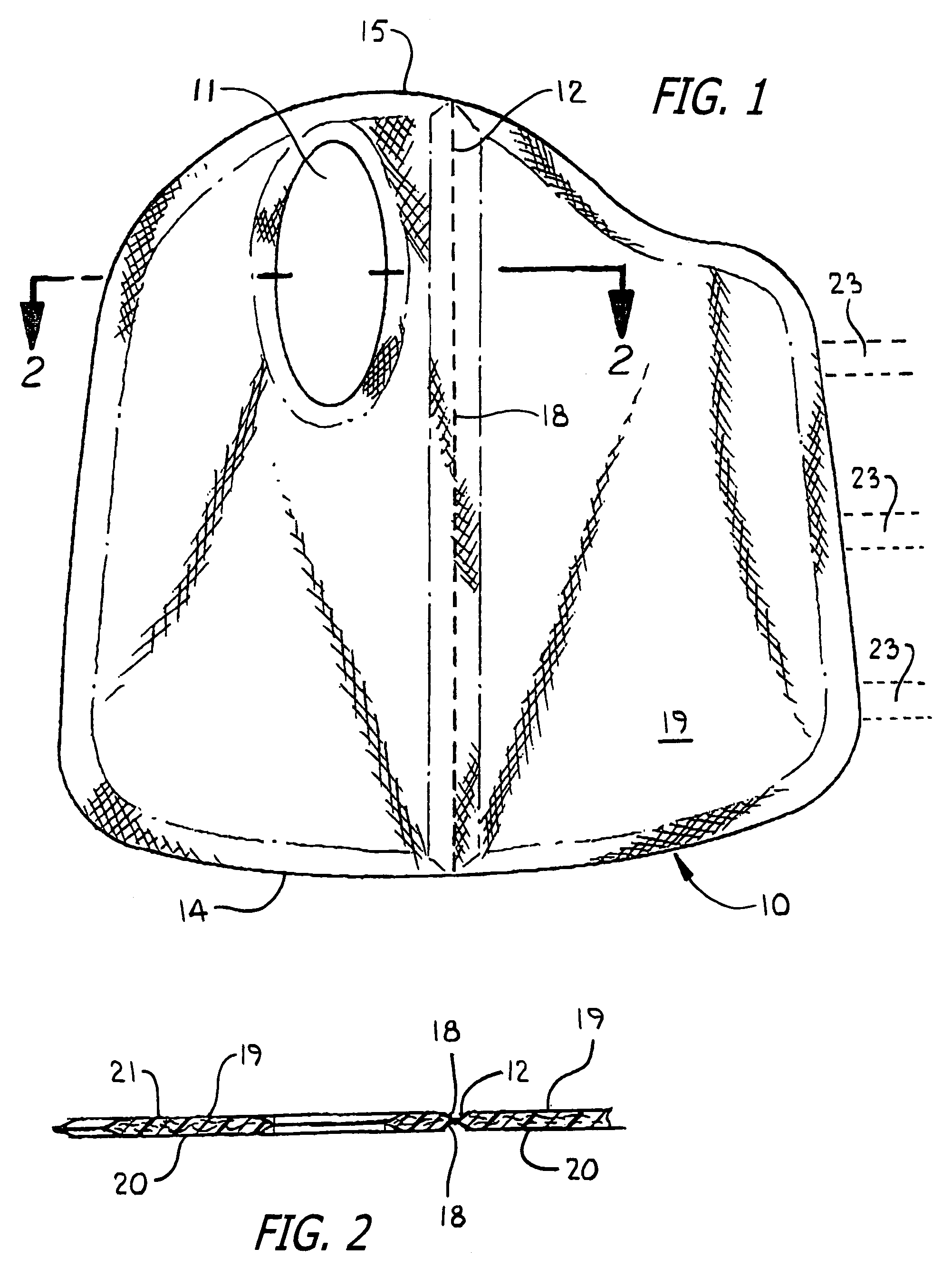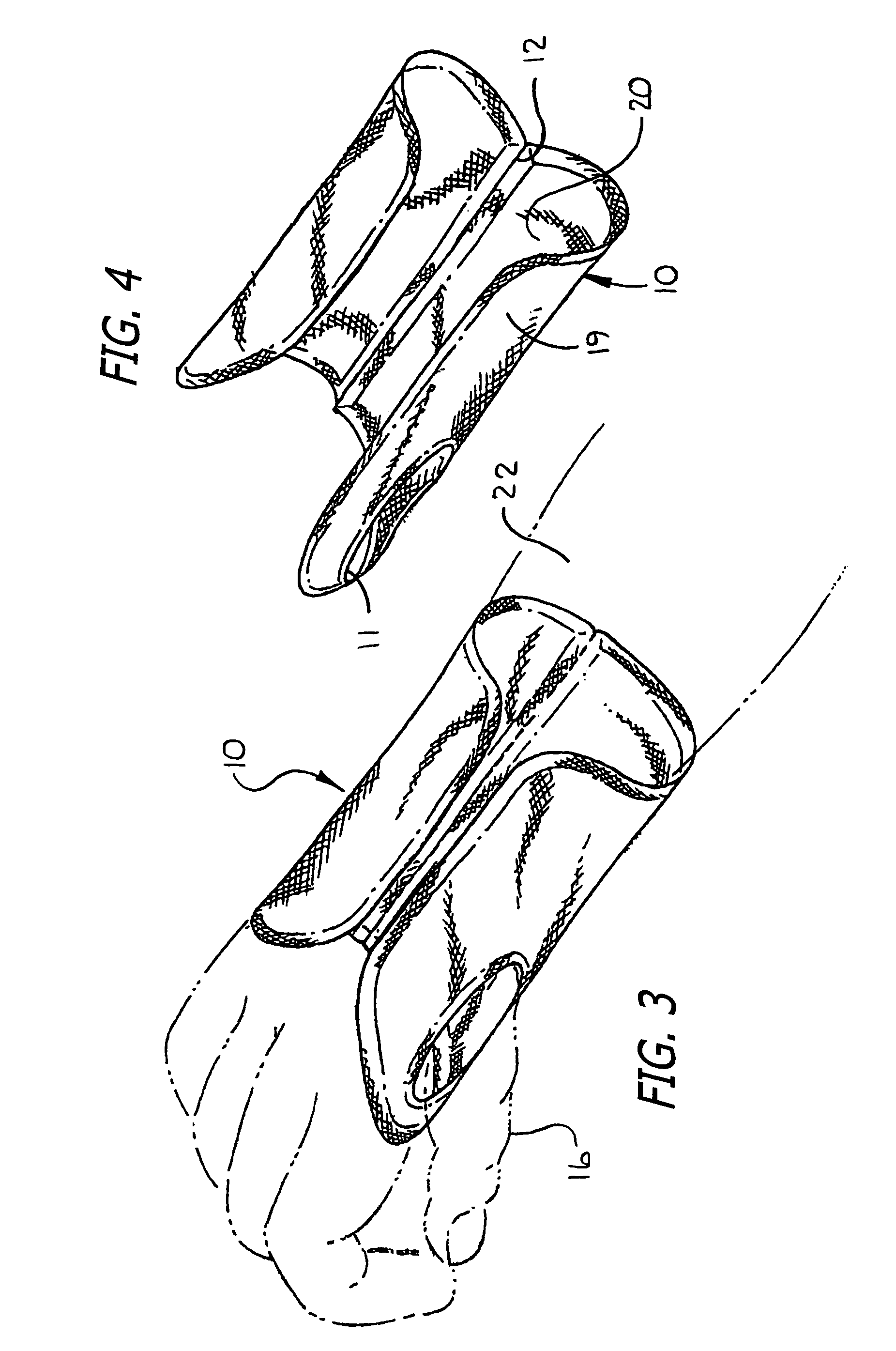Versatile hardenable cast or support
a cast or support technology, applied in the field of casts or supports, can solve the problems of patient discomfort and trauma, and achieve the effects of reducing the amount of resin, reducing the thickness, and greatly reducing the structural strength
- Summary
- Abstract
- Description
- Claims
- Application Information
AI Technical Summary
Benefits of technology
Problems solved by technology
Method used
Image
Examples
Embodiment Construction
[0029]The invention is now further described with reference to the accompanying drawings, which show by way of illustration specific embodiments in which the invention may be practiced. It is to be understood that other embodiments may be utilized and structural and functional changes may be made without departing from the scope of the present invention.
[0030]Referring more particularly to FIGS. 1 through 5 and FIGS. 7 and 8, a cast for a hand or wrist to promote the healing of an injury comprises a material 10, which is initially flexible and can be formed of a woven or knitted material, and may be impregnated with a hardenable material such as a water curable polyurethane. When activated, this material can form a suitably rigid structure to relatively immobilize a portion of the body such as the hand, wrist or arm 22. As shown, the material 10 includes an aperture 11 for receiving the thumb 16 of the patient (see FIG. 3)
[0031]In the preferred embodiment, material 10 may be formed ...
PUM
 Login to View More
Login to View More Abstract
Description
Claims
Application Information
 Login to View More
Login to View More - R&D
- Intellectual Property
- Life Sciences
- Materials
- Tech Scout
- Unparalleled Data Quality
- Higher Quality Content
- 60% Fewer Hallucinations
Browse by: Latest US Patents, China's latest patents, Technical Efficacy Thesaurus, Application Domain, Technology Topic, Popular Technical Reports.
© 2025 PatSnap. All rights reserved.Legal|Privacy policy|Modern Slavery Act Transparency Statement|Sitemap|About US| Contact US: help@patsnap.com



